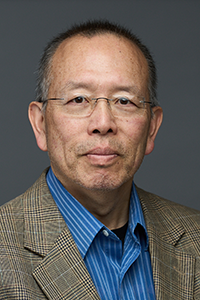John Yin
Home Department: Chemical and Biological Engineering
Location: 330 N Orchard Street, 3172
Education: BA, Columbia College
BS, Columbia University
PhD, University of California–Berkeley
Postdoctoral Fellowship, Max-Planck-Institut fuer Biophysikalische Chemie
Lab website: https://yinlab.discovery.wisc.edu/
Forecasting of virus-host growth and infection spread; physical and chemical origins of life
John Yin grew up in the Maryland suburbs of Washington, D.C., studied in NYC and Berkeley, CA, as well as Germany, but he has now finally settled down with wife and two boys in Madison in biking distance to the University.



